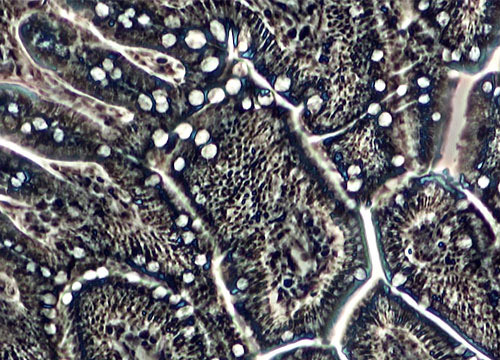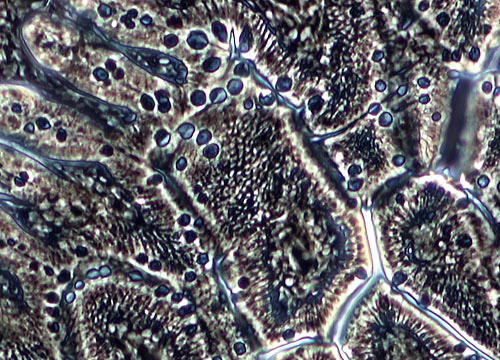Mouse Intestine Thick Section
Not all mice attain the fame of such greats as Mickey, Jerry, and Mighty Mouse. However, many are significant in other ways, especially as laboratory animals. Their large intestines are very similar to those of other vertebrates, the primary function of which is to absorb water and electrolytes from digestive residues and to store fecal material.
 Negative
Negative
 Positive
Positive
Positive
The word “mouse” has no scientific meaning, but species of many families of small rat-like rodents are referred to as mice. Most mouse species, such as the common house mouse, belong to the family Muridae. Over 1300 species of murid rodents have been identified, making Muridae undoubtedly the largest family of mammals currently in existence. Members reside in nearly every habitat on all continents except Antarctica and may even be found on many oceanic islands. In numerous locations, however, species were introduced by humans, rather than occurring naturally.
Negative
Laboratory mice are special breeds of house mice and comprise a majority of the animals used in research, teaching, and testing. Large mammals are not often practical for scientific study. Mice, however, are small, easy to handle, inexpensive to rear, breed quickly, and are genetically similar to humans. Beginning in the Twentieth Century, scientists bred different strains of mice with specific genetic deficiencies in order to produce models for human diseases. Today, mice are used to study everything from drug addiction to cancer and human immunodeficiency virus (HIV).













